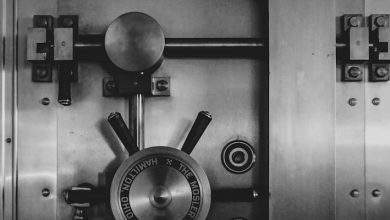Setting Up Two-Factor Authentication for Enhanced Security

- Understanding Two-Factor Authentication
- The Importance of Adding an Extra Layer of Security
- Step-by-Step Guide to Setting Up Two-Factor Authentication
- Choosing the Right Two-Factor Authentication Method for You
- Common Mistakes to Avoid When Implementing Two-Factor Authentication
- Benefits of Two-Factor Authentication in Protecting Your Accounts
Understanding Two-Factor Authentication
Two-factor authentication is an extra layer of security that helps protect your online accounts from unauthorized access. This method requires not only a password and username but also something that only the user has on them, such as a piece of information only they know or have access to. This could be a fingerprint, a code sent to their mobile phone, or a security key.
By enabling two-factor authentication on your accounts, you are adding an extra step to the login process, making it more difficult for hackers to gain access to your sensitive information. Even if someone manages to steal your password, they would still need the second factor to successfully log in to your account.
Many online services and websites offer two-factor authentication as an option to enhance security. It is highly recommended to enable this feature wherever possible, especially for accounts that contain personal or financial information. Take the time to set up two-factor authentication today and enjoy the peace of mind knowing that your accounts are better protected.
The Importance of Adding an Extra Layer of Security
Adding an additional layer of security through two-factor authentication is crucial in today’s digital landscape. By requiring users to provide two forms of identification before granting access, you significantly reduce the risk of unauthorized access to sensitive information. This extra step acts as a barrier against potential cyber threats, such as phishing attacks and password breaches. Implementing two-factor authentication demonstrates a commitment to protecting your data and maintaining the integrity of your online accounts.
Step-by-Step Guide to Setting Up Two-Factor Authentication
To set up two-factor authentication for enhanced security, follow these step-by-step instructions:
- Go to your account settings on the website or application where you want to enable two-factor authentication.
- Look for the security or privacy settings within your account settings.
- Locate the two-factor authentication option and select it.
- Choose the type of two-factor authentication you prefer, such as SMS codes, email verification, or app-based authentication.
- Follow the on-screen instructions to complete the setup process.
- Once two-factor authentication is enabled, you will be prompted to enter a verification code each time you log in to your account.
- Make sure to store backup codes in a secure location in case you lose access to your primary two-factor authentication method.
- Regularly review your two-factor authentication settings to ensure your account remains secure.
By following these simple steps, you can add an extra layer of security to your accounts and protect your personal information from unauthorized access.
Choosing the Right Two-Factor Authentication Method for You
When setting up two-factor authentication for enhanced security, it is important to choose the right method that suits your needs. There are various options available, each with its own strengths and weaknesses. One of the most common methods is using SMS codes, where a unique code is sent to your phone for verification. While this method is convenient, it is not the most secure as SIM swapping attacks can compromise your account.
Another popular option is using authenticator apps such as Google Authenticator or Authy. These apps generate a time-based code that refreshes every few seconds, adding an extra layer of security. However, if you lose your phone or it gets stolen, you may have trouble accessing your accounts.
Biometric authentication, such as fingerprint or facial recognition, is also becoming more prevalent. This method is convenient and secure, as it uses unique physical characteristics for verification. However, it may not be foolproof as biometric data can be stolen or replicated.
When choosing the right two-factor authentication method for you, consider the level of security you need, your comfort level with technology, and the convenience factor. It is recommended to use a combination of methods for added security, such as using a password manager in conjunction with two-factor authentication. Ultimately, the best method is one that balances security and usability to keep your accounts safe from unauthorized access.
Common Mistakes to Avoid When Implementing Two-Factor Authentication
When setting up two-factor authentication, there are some common mistakes that you should avoid to ensure the security of your accounts. One mistake to avoid is using the same device for both factors, such as using your phone to receive a text message code and then using the same phone to enter that code. This defeats the purpose of having two separate factors of authentication.
Another mistake to avoid is using weak or easily guessable passwords for your second factor. It’s important to use a strong, unique password or passphrase to add an extra layer of security to your accounts. Additionally, make sure to keep your second factor secure and not share it with anyone.
One common mistake that many people make is not keeping their two-factor authentication methods up to date. It’s important to regularly review and update your authentication methods to ensure that they are still secure and effective. This can include changing your passwords, updating your security questions, or adding new authentication factors.
Finally, one of the biggest mistakes to avoid is not enabling two-factor authentication on all of your accounts that offer it. By only enabling it on some accounts, you leave yourself vulnerable to attacks on the accounts that don’t have this extra layer of security. It’s important to enable two-factor authentication on all of your accounts to protect your sensitive information.
Benefits of Two-Factor Authentication in Protecting Your Accounts
Implementing two-factor authentication provides an additional layer of security for your online accounts, making it harder for cybercriminals to gain unauthorized access. This extra step in the login process helps to verify your identity more effectively than just using a password alone. By requiring a second form of verification, such as a code sent to your phone or email, you can significantly reduce the risk of being hacked.
One of the main benefits of two-factor authentication is that even if your password is compromised, hackers would still need access to your second factor (like your phone) to successfully log in to your accounts. This added security measure can prevent unauthorized users from gaining control of your sensitive information, such as personal data, financial details, or private messages.
Furthermore, two-factor authentication can also help protect you from phishing attacks. Since these attacks often rely on tricking you into revealing your password, having a second layer of security makes it much more challenging for cybercriminals to deceive you into handing over your login credentials.
Overall, setting up two-factor authentication is a simple yet effective way to enhance the security of your accounts and safeguard your online presence. By taking this extra step to verify your identity, you can better protect yourself from potential threats and enjoy greater peace of mind knowing that your information is better protected.



